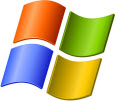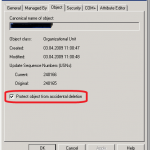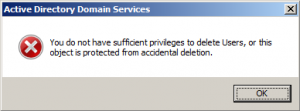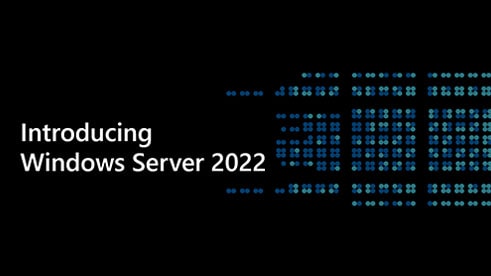In this post I will tell you how to protect an Active Directory OU from accidental deletion. It is very easy and simple and I think it is a very good thing to do on all your main OU. You have to ask yourself how often do you delete an OU from you active directory that you have not just created. Alomost never right? So why not protect it from accidental deletion? If you want to delete it some day all you have to do is to clear the check box “Protect object from accidental deletion” (see the picture below) on the object you want to delete. This is not rocket science, but simply a little tip you can use if you want to.
To protect an OU from accidental deletion
- Log on to the computer as a member of the Domain Admins group.
- Open Active Directory Users and Computers.
- Click View, and then click Advanced Features.
- First, select the OU that you want to protect. Right-click the OU that you want to protect, and then click Properties.
- In OU Properties, click the Object tab, and then select the Check box “Protect object from accidental deletion”, and then click OK.
After this is done you are no longer allowed to delete the OU. This can of cause be changed by clearing the check box again.
If you try to delete an OU that are protected you get this error.







Hey Thomas,
Okay, I’m not that techie and I don’t really understand a lot of what you share with us but can you really “accidentally” delete something on your computer? It seems that there is always some pop-up that is going to ask you if you are sure you want to delete this and that would be the first indication that you better think twice! I remember people accidentally deleting certain files and I always scratched my head over that one. But, tells you what I know right!
You are definitely the guy I’m going to come to when I run into any problems or have questions. You sure know your stuff.
Adrienne
Hi Adrienne
Active directory only exists on Windows servers that might be the reason that you have not heard about it 😉 Sometimes people need to delete, but accidental delete the wrong one. Those things happen, but in active directory it can have big impact for many users in a Windows network.
You are always welcome of you have a question you think I can answer for you 🙂